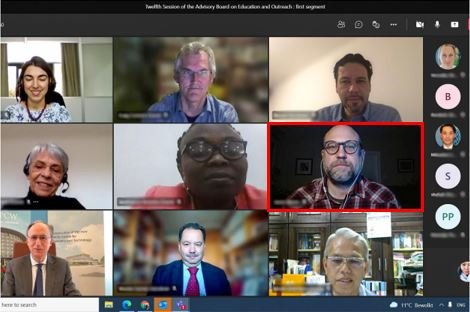https://www.col.org/news/registration-open-for-on-authentic-assessment-for-online-learning/
As efforts to expand online education proceed, it is critical to design more interactive educational experiences that integrate regular, direct, and meaningful contact and communication (Protopsaltis & Baum, 2019).
Moore (1989) realized this 30 years ago, and he identified three types of learner interaction.
Learner-content
Learner-instructor
Learner-learner
Learner-content interaction “is a defining characteristic of education. Without it, there cannot be education, since it is the process of intellectually interacting with content that results in changes in the learner’s understanding” (p. 1). Learner-content in this course takes place with the lectures and the readings, the quizzes, and the assignments. The “tyranny of content” (Petersen, et al., 2020) can squeeze out other forms of interaction, however.
Learner-instructor interaction takes place through the curriculum , where the instructors seeks to stimulate the learner’s interest and motivation. Learner-instructor interaction takes place directly in the lectures, and indirectly in every aspect of the course.
Learner-learner interaction, as Moore writes, “is sometimes an extremely valuable resource for learning.” I would go even further; my favorite quote about teaching is probably this one: "The best answer to the question, 'What is the most effective method of teaching?' is that it depends on the goal, the student, the content and the teacher. But the next best answer is, 'students teaching other students.'" (McKeachie, et al., 1987, p. 63). Learner-learner interaction takes place in the forums, where the learners have responded to, expanded upon, and enlightened others with their knowledge and experience. It also takes place in collaborative work.
Authentic assessments have the potential to weave these three interactions into a single learning event. Learners interact with the content in relevant, real-world ways. The instructor designs the curriculum and the authentic task, and can provide coaching to the students. If the task is a collaborative one, learners interact with each other in the process of building the polished product. This is partly why authentic assessments can be such powerful learning experiences.
Dr. J
McKeachie, W. J., Pintrich, P. R., Lin, Y., and Smith, D. A. F. National Center for Research to Improve Postsecondary Teaching and Learning, A. M., & And, O. (1987). Teaching and Learning in the College Classroom. A Review of the Research Literature (1986) and November 1987 Supplement.
Moore, Michael. (1989). Three Types of Interaction. American Journal of Distance Education. 3. 1-7. 10.1080/08923648909526659.
Petersen, C. I., Baepler, P., Beitz, A., Ching, P., Gorman, K. S., Neudauer, C. L., Rozaitis, W., Walker, J.D., & Winger, D. (2020). The tyranny of content: "Content coverage" as a barrier to evidence-based teaching approaches and ways to overcome it. Life Sciences Education, 19(2). https://www.lifescied.org/doi/10.1187/cbe.19-04-0079
Protopsaltis, S., & Baum, S. (2019). Does online education live up to its promise: A look at the evidence and implications for federal policy. George Mason University. https://distance-educator.com/does-online-education-live-up-to-its-promise-a-look-at-the-evidence-and-implications-for-federal-policy/











